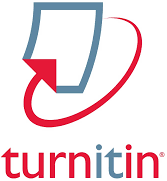Study Of Hybrid Cantang Grouper Breeding Techniques (Epinephelus Fuscoguttatus X Epinephelus Lanceolatus) At The Brackish Water Fisheries Cultivation Center Situbondo, East Java
DOI:
https://doi.org/10.29303/jfh.v4i3.5933Kata Kunci:
Grouper, Hatchery, Hatching Rate, Hybridization, Survival RateAbstrak
Hybrid cantang grouper is a type of grouper fish that is included in the luxury food commodity, namely a type of commodity that has a high selling value and is often exported which has an impact on increasing the need for seeds so that efforts are needed that culminate in seeding. The purpose of this study was to study and understand the seeding technique of hybrid cantang grouper (Ephinephelus fuscoguttatus x Epinephelus lanceolatus) which was carried out at the Brackish Water Aquaculture Center (BPBAP) Situbondo, East Java. The population of this study used 2 larval maintenance tanks and 14 natural feed tanks. Data were obtained directly through direct observation in the field. The results of the study showed that cantang grouper seeds were produced from the hybridization process, then the types of feed given during the larval maintenance period were natural feed (Rotifera, Artemia and Rebon shrimp) and artificial feed (Powder, crumbs and pellets), then air quality maintenance was carried out by giving Chlorella sp. as a green water system, then air changes, siphoning with air quality values during the maintenance period of temperature 30oC, Salinity 30.1 ppt, pH 8.05, Nitrite 0.498 mg / L, Free Ammonia 0.04675 mg / L, DO 5.85 mg / L. The Hatching Rate (HR) value was obtained 98.45% and 92.63% and Survival rate 12.68% with a maintenance period of 70 days until the total harvest of 2.7cm-3cm seeds.Unduhan
Diterbitkan
Cara Mengutip
Terbitan
Bagian
Lisensi
1. The copyright of this journal belongs to the Editorial Board, based on the author's consent, while the moral rights of the publication belong to the author(s).
2. The formal legal aspect of journal accessibility refers to the same Creative Common Attribution + Noncommercial + ShareAlike (CC BY-NC-SA), implying that publication can be used for non-commercial purposes in its original form.
3. Every publication (printed/electronic) is open access for educational, research and library purposes. In addition to the objectives stated above, the editorial board is not responsible for copyright infringement















